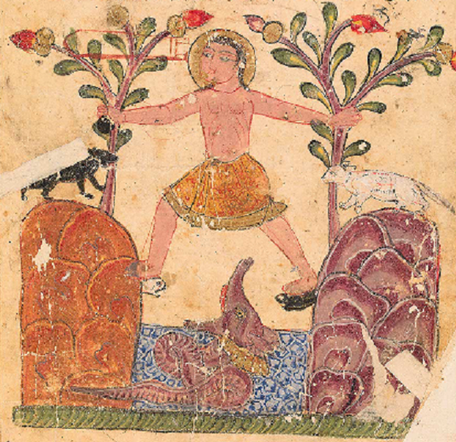The Persian "Bilawhar wa Buyūdhas(a)f(a)" as a Mirror for Princes
DOI:
https://doi.org/10.5617/jais.10124Abstract
The present article introduces a fourteenth-century Persian retelling of the story of Bilawhar wa Buyūdhas(a)f(a), produced for the Jalāyirid court in Baghdad between 790-800/1389-1397, and highlights its stylistic and structural characteristics as an important representative of Persian prose in the post-Mongol period. The article examines the dynamic role of the framing structure in the classification of fictional and non-fictional content, and elaborates on its semantic significance in the transmission of relevant messages to the target audience according to the needs and necessities of that particular historical period. The article demonstrates how the flexibility of the framing structure along with the adaptability of the embedded narrative content on subjects such as religious tendencies and standards of governance turned this story of Buddhist origin into a text in the mirror for princes genre in accordance with the Perso-Islamic culture.
Key words: Bilawhar wa Buyūdhas(a)f(a), mirror for princes, Persian advice literature, framing narrative, the Buddha, Jalāyirid dynasty
Downloads
Published
How to Cite
Issue
Section
License
For content published in editions of JAIS before 2002, copyright belongs to the author. Content published between 2002 and 2017 is copyrighted by Edinburgh University Press (reproduced on FRITT with permission). Text and other material published in these journal volumes can only be shared and republished with written permission from the rights holders.
Starting from 2017, the content published in JAIS is - unless otherwise is stated - licensed through Creative Commons License Attribution 4.0: https://creativecommons.org/licenses/by/4.0/. Through this licence content can be copied and distributed but also remixed, transformed and built upon for any purpose under the following conditions:
Attribution — You must give appropriate credit to the creators of materials published in JAIS, provide a link to the license, and indicate if changes were made. You may do so in any reasonable manner, but not in any way that suggests the licensor endorses you or your use.
No additional restrictions — You may not apply legal terms or technological measures that legally restrict others from doing anything the license permits.
Notice: No warranties are given. The license may not give you all of the permissions necessary for your intended use. For example, other rights such as publicity, privacy, or moral rights may limit how you use the material.
Authors who publish in JAIS accept the following conditions:
Author(s) retains copyright to the article and give JAIS right to first publication while the article is licensed under the Creative Commons CC BY 4.0. This license allows sharing the article for non-commercial purposes, as long as the author and first publishing place JAIS are credited. The license does not allow others to publish adapted versions of the article without the author's permission.
The author is free to publish and distribute the work/article after publication in JAIS, as long as the journal is referred to as the first place of publication. Submissions that are under consideration for publication or accepted for publication in JAIS cannot simultaneously be under consideration for publication in other journals, anthologies, monographs or the like. By submitting contributions, the author accepts that the contribution is published in both digital and printed editions of JAIS.



